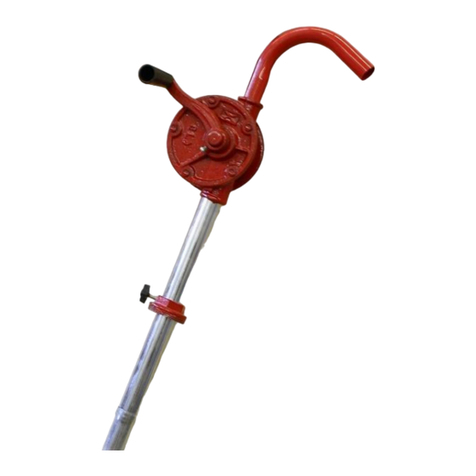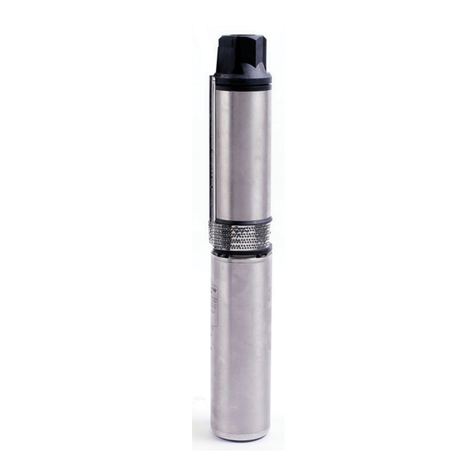
Page 9 of 32 IS3206VSP3J Rev-A
WARNING –Hazardous Pressure. Pumps, filters, and other equipment/ components of a swimming pool
filtration system operate under pressure. Incorrectly installed and/or improperly tested filtration equipment and/or
components may fail resulting in severe personal injury or death.
4.4. Plumbing
1. Use PTFE tape to seal threaded connections on molded plastic components. All plastic fittings must be new or
thoroughly cleaned before use. NOTE - Do NOT use Plumber’s Pipe Dope as it may cause cracking of the plastic
components. When applying PTFE tape to plastic threads, wrap the entire threaded portion of the male fitting with
one to two layers of tape. Wind the tape clockwise as you face the open end of the fitting, beginning at the end of the
fitting. The pump suction and outlet ports have molded-in thread stops. Do NOT attempt to force hose connector
fitting past this stop. It is only necessary to tighten fittings enough to prevent leakage. Tighten fitting by hand and then
use a tool to engage fitting an additional 1 ½ turns. Use care when using PTFE tape as friction is reduced considerably;
do NOT over-tighten fitting or you may cause damage. If leaks occur, remove connector, clean off old PTFE tape, re-
wrap with one to two additional layers of PTFE tape, and re-install connector.
2. Fittings (elbows, tees, valves, etc.) restrict flow. For better efficiency, use the fewest possible fittings. Avoid fittings
that could cause an air trap. Pool and spa fittings MUST conform to the International Association of Plumbing and
Mechanical Officials (IAPMO) standards.
4.5. Electrical
WARNING –All electrical wiring MUST conform to local codes, regulations, and the National Electric Code
(NEC).
WARNING –Ground and bond pump before connecting to electrical power supply. Failure to ground and
bond pump can cause serious or fatal electrical shock hazard. Do NOT ground to a gas supply line. To avoid dangerous or
fatal electrical shock, turn OFF power to pump before working on electrical connections. Fire Hazard - match supply
voltage to pump nameplate voltage. Insure that the electrical supply available agrees with the pump’s voltage, phase, and
cycle, and that the wire size is adequate for the amps rating and distance from the power source. Use copper conductors
only.
4.6. Electrical Specs
Refer to motor nameplate for voltage and current ratings. Use copper conductors only. For indoor & outdoor use.
Connect pump to a 15 amp branch circuit in accordance with local codes, regulations, and the National Electric Code
(NEC). A disconnecting means located at least 5 ft. from the inside wall of the pool, spa, or hot tub must be provided.
4.7. Voltage
Voltage at pump MUST NOT be more than 10% above or below nameplate rated voltage, or components may overheat,
causing overload tripping and reduced component life. If voltage is less than 90% or more than 110% of rated voltage when
pump is running at full load, consult the power company.
4.8. Grounding and Bonding
1. Install, ground, bond, and wire pump in accordance with local or national electrical code requirements.
2. Permanently ground pump. Use green ground terminal provided under access plate; use size and type wire required by
code. Connect ground terminal to electrical service ground.
3. Bond pump to pool structure. Bonding will connect all metal parts within and around the pool with a continuous wire.
Bonding reduces the risk of a current passing between bonded metal objects, which could potentially cause electrical
shock if grounded or shorted. Reference NEC codes for all wiring standards including, but not limited to, grounding,
bonding and general wiring procedures.
4. Use a solid copper conductor, size 8 or larger. Run wire from external bonding lug to reinforcing rod or mesh.
Connect a No. 8 AWG (8.4 mm2) [No. 6 AWG (13.3 mm2) for Canada] solid copper bonding wire to the pressure
wire connector provided on the motor housing and to all metal parts of swimming pool, spa, or hot tub, and to all
electrical equipment, metal piping (except gas piping), and conduit within 5 ft. (1.5 m) of inside walls of swimming pool,
spa, or hot tub.





